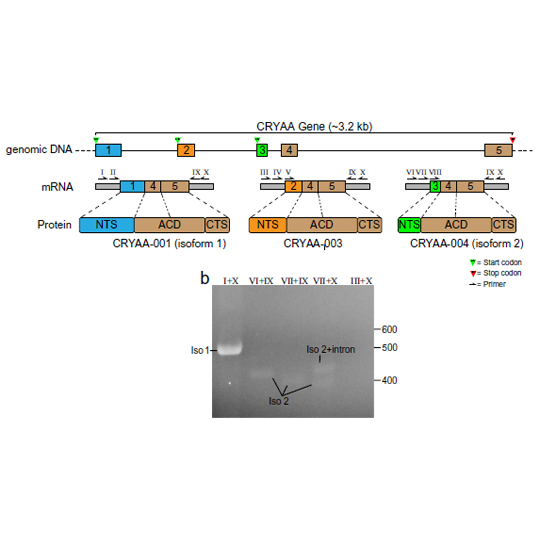An alternative splice variant of human αA-crystallin modulates the oligomer ensemble and the chaperone activity of α-crystallins
18-Feb-2017
Cell Stress and Chaperones, Volume 22, Issue 4, pp 541–552; DOI 10.1007/s12192-017-0772-2
Cell Stress and Chaperones, online aticle
In humans, ten genes encode small heat shock proteins with lens αA-crystallin and αB-crystallin representing two of the most prominent members. The canonical isoforms of αA-crystallin and αB-crystallin collaborate in the eye lens to prevent irreversible protein aggregation and preserve visual acuity. α-Crystallins form large polydisperse homo-oligomers and hetero-oligomers and as part of the proteostasis system bind substrate proteins in non-native conformations, thereby stabilizing them. Here, we analyzed a previously uncharacterized, alternative splice variant (isoform 2) of human αA-crystallin with an exchanged N-terminal sequence. This variant shows the characteristic α-crystallin secondary structure, exists on its own predominantly in a monomer–dimer equilibrium, and displays only low chaperone activity. However, the variant is able to integrate into higher order oligomers of canonical αA-crystallin and αB-crystallin as well as their hetero-oligomer. The presence of the variant leads to the formation of new types of higher order hetero-oligomers with an overall decreased number of subunits and enhanced chaperone activity. Thus, alternative mRNA splicing of human αA-crystallin leads to an additional, formerly not characterized αA-crystallin species which is able to modulate the properties of the canonical ensemble of α-crystallin oligomers.











